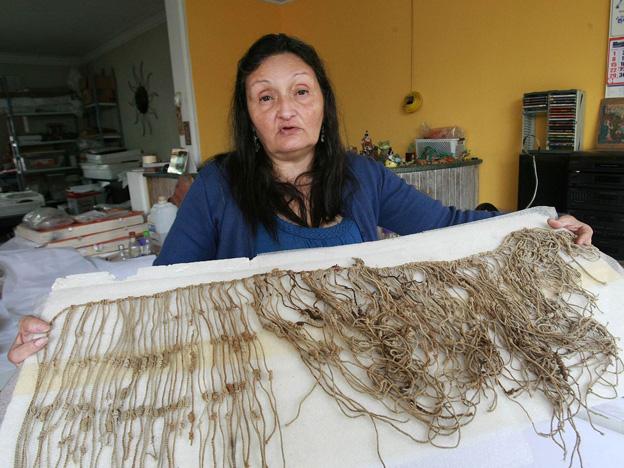June 25, 2014
Andina Peru This Week

Quipus where used as a form of record-keeping in Inca society, which had no written language.
A set of twenty-five well-preserved quipus were found in the archaeological complex of Incahuasi, south of Lima, Alejandro Chu, archaeologist in charge of the site reported on Tuesday.
Chu told Andina News Agency that this is a major finding as the quipus were found in warehouses or kallancas and not in a funerary context, as most discoveries in the past, “what makes us believe they were used for administrative purposes”.
According to the Peruvian archaeologist, these objects, used by the Inca empire and previous societies in the Andean region, have different sizes the longest measures 3 meters and they have multiple knotted strings of different colors.
Incahuasi or Inca house, located 29.5 kilometers south to the Cañete-Lunahuana highway- is the most important and strategic city built by the Incas in the valley of Lunahuana.
Quipus
With no written language, the Inca devised a tool for recording the movement of people and goods. A quipu is essentially a group of wool and cotton strings tied together.
The strings are dyed in many different colors, and they are joined together in many different manners and they have a wide variety and number of knots tied in them. Together the type of wool, the colors, the knots and the joins hold information that was once readable by several South American societies.
Many of these quipus were destroyed by the Spanish conquistadors in the 16th century, but approximately 200 of them dating no earlier than about 650 AD have been found.
Although archaeologists do not all agree about the function of the knotted strings, one fairly compelling argument is that the quipu was a method of record keeping.
